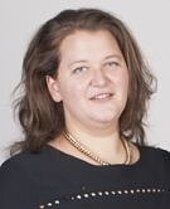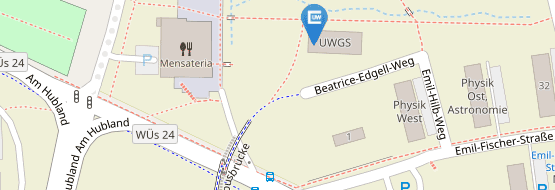de Sunda, Angela
Congratulations on passing the viva voce on 14 June 2023.
Dissertation topic:
"Zur sprachtherapeutischen Intervention bei rigid-hypokinetischer Dysarthrophonie bei Morbus Parkinson mit additivem Verfahren tDCS" / "Intervention of speechtherapy in rigid-hypokinetic Dysarthrophonia of Patients with Idiopathic Parkinson Syndrome in combination with tDCS"
Contact address at the University of Würzburg:
Chair of Speech and Language Pathology
Wittelsbacherplatz 1
97074 Würzburg
First supervisor: Prof. Dr D. Hansen
Second supervisors:
Class in the Graduate School: "Education and Culture"
Doctorate in the Graduate School from SS 2017.
Abstract:
Vocal and linguistic improvements following speech therapy intervention for people with dysarthrophonia, in particular people with Parkinson's disease, have so far only been scientifically proven for one speech therapy method. This is the Lee-Silverman Voice Treatment (Ramig et al., 2004, Sapir et al., 2007). There is still a lack of internationally recognised scientific evidence for conventional speech therapy treatment methods, including in combination with equipment-based methods such as transcranial direct current stimulation (tDCS) (see AWMF S3 guideline on "idiopathic Parkinson's syndrome" from 2016), although there are initial indications of therapeutic improvements for tDCS as an additive method in speech therapy (see Sakreida et al, 2016, Müller, 2017, Schemmer, 2017).
I would like to dedicate myself to this clinical-logopaedic topic, consisting of combined application and intervention research in the medical field, in order to scientifically investigate the speech therapy care of people with Parkinson's disease, especially with regard to vocal and linguistic activities, as well as their participation in society.
A clinical study with Parkinson's patients is currently being designed. This patient group appears to be highly relevant based on epidemiological data, as around 220,000 Parkinson's patients live in Germany (Gustavsson 2011). The number of new cases per year (incidence) is given as 11 to 19/100,000 inhabitants (Campenhausen 2005). According to estimates by Dorsey (Dorsey, 2007), the change in age distribution in industrialised countries will lead to a doubling of cases worldwide by 2030.
A scientific analysis of current speech therapy procedures, their evidence and methodological developments is therefore essential.






